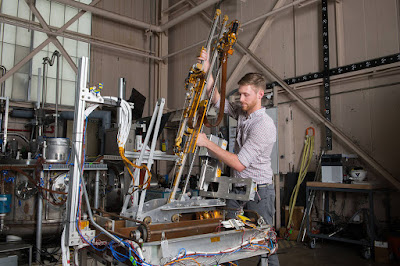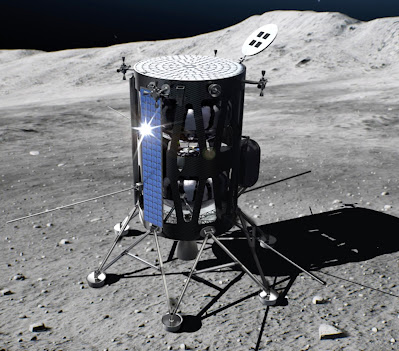Boston University is leading the development of the Lunar Environment Heliospheric X-ray Imager (LEXI) instrument, which is booked to land the Moon's surface in 2023 onboard the Blue Ghost lander, which is built and operated by Firefly Aerospace.
LEXI is a wide Field-of-View (FOV) soft X-ray imager, designed to study the interactions between the solar wind and the Earth’s magnetic field. These interactions play an important role in space weather, which can have big impacts on satellites as well as electrical systems here on Earth.
Another great thing about the LEXI project is that it has its own twitter channel with regular updates on ths instrument's developments.
 |
| LEXI under going vibration testing (Credit: Boston University) |
LEXI is a collaboration between Boston University, NASA Goddard Space Flight Center, Johns Hopkins University, the University of Alaska, Fairbanks, University of Miami, University of Kansas, and the University of Leicester.
LEXI's 5x5 degree FOV soft X-ray telescope will be able to continually look at at the Earth's magnetosphere. From its vantage point on the Moon, it will have a good side view of the bow shock (see simulated image below).
 |
| A simulated LEXI image (Credit: LEXI project team) |
Twice a month, as the Moon orbits the Earth, there is a side view of the bow shock, and the views at other times of the month might also be useful.
However, Since the 2023 lander mission will not have luanr night survival capability, LEXI will only get a single pass around dusk on the first lunar day during which it can image the bow shock from the side. As such, this first mission should be seen mainly as a proof of concept.
With appropriate lunar night survival capabilities, future instances of LEXI could be deployed on the Moon to carry out ongoing observations over many months or years. Note that due to the Moon's librations and orbit, the Earth doesn't remain fixed in the sky, but it's pretty close to fixed. An actuaor system would be needed to pan and tilt to follow the Earth's motion and keep LEXI aimed at exactly the desired direction.
***






